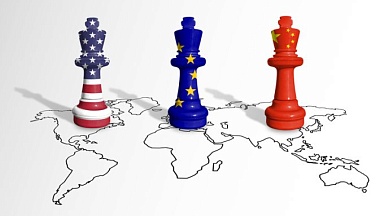As Olga Stepanova, CEO of Eurasia Logistics, pointed out, the rise in the volume of Chinese cars sold in Russia did not translate into higher rail freight volumes. This is because, as she added, the automotive industry does not ship significant volumes by rail. Cargo transported from China to Russia via rail traditionally consists of products, including building materials, industrial equipment, household appliances, and consumer goods.
Ro-Ro ship shortage may open up opportunities for rail
Additional issues with transporting cars by rail are costs and volumes. Sea freight rates are dropping to even ten times cheaper than its rail counterpart, leading the industry to prefer transportation via water rather than iron. Moreover, transporting electric cars via sea allows for significantly more capacity. A Ro-Ro ship can handle around 6,000 of these items, whereas one rail convoy can transport a couple hundred of them.
However, as Ganyi Zhang, political and economic strategist at Geodis, pointed out during the latest RailFreight webinar, there currently is a shortage of Ro-Ro ships. Zhang states that the rail will be able to make up for this gap. In addition, sources from Chinese car manufacturer Great Wall Motor told our sister publication RailFreight.cn that exports of electric cars to Europe can occur by rail when shipping capacity is tight.
Car imports from China increased, but overall car sales have dropped
The market share of sales of Chinese cars in Russia rose from 7,5 per cent in 2021 to 39,7 per cent in 2022. On the other hand, imported cars from the EU have decreased significantly as a consequence of the current geopolitical situation. According to data provided by Reuters, they dropped by 61,6 per cent year-on-year in November 2022.
This can be linked to the fact that many car manufacturers, including Mercedes-Benz, Toyota, and Renault decided to stop doing business in Russia after the start of a special military operation. Renault’s plant in Moscow, for example, has been transferred by the government and is used to produce the Russian-made car Moskvitch.
For Chinese car brands, these developments can become an opportunity for exploiting a market that has been usually dominated by Western manufacturers. In 2022, three Chinese car manufacturing brands, Chery, Haval, and Geely, covered 82 per cent of Chinese car sales in Russia.
What about New Energy Vehicles?
Various industry players contacted by RailFreight.com highlighted that the current demand for new cars in Russia is mainly for traditional fuel cars. «The number of electric vehicles I have seen in Moscow may be counted on my fingers,» Zhu Linlin, founder of LLC Translogistic, said during the RailFreight webinar a few days ago. Although the rail transportation of New Energy Vehicles (NEVs) from China to Europe was approved by China Railway and the Chinese government, «only a small part of the cars shipped from China to Russia are NEVs», said Yan Chao, CEO of NSR Intermodal.
At the RailFreight.com webinar, however, Zhu Linlin, the founder of LLC Translogistic, and Telenged Baast, CEO of Monlogistics, both underlined the potential of the NEV market in Russia for China. Linlin underlined that LLC Translogistic has been receiving inquiries from many customers about their needs to transport lithium batteries by rail. Since this is still not allowed in China, the company chose to move the batteries on the road to send them to Russia. A similar trend was also identified by Baast, who also confirmed the plight of still not being able to transport lithium batteries by rail in practice.





